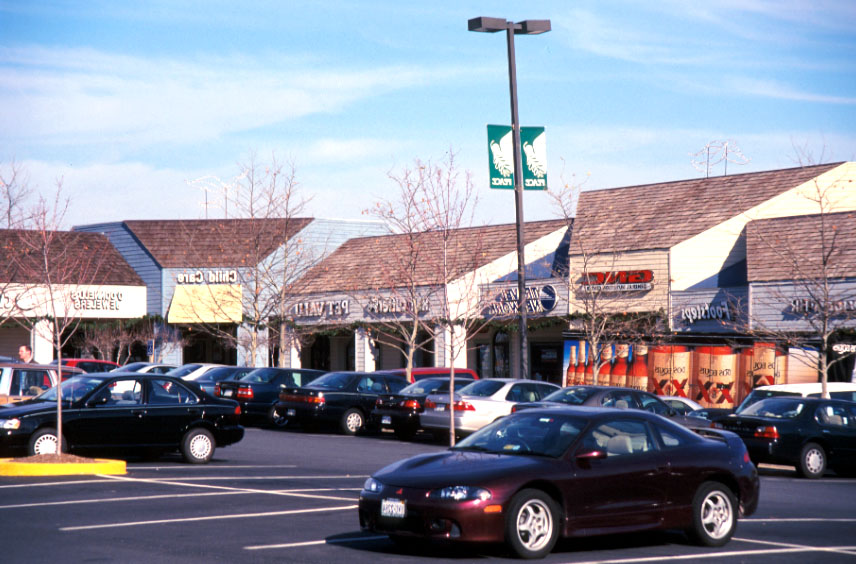The other Reston village centers didn't have the Lake Anne feel; they are strip malls where you hop in and out of your car and dart into stores; there is no place to linger.

The problem with success is that everyone wants a piece of it. Hence the runaway development in Reston, Virginia. The original neighborhoods remain inviting environments: Modernist apartments crown inward-facing retail stores and there's plenty of greenery integrated into a comfortably high-density community. They're instead building bland strip malls, office parks, and housing -- all designed for volume rather than quality of life. While older neighborhoods feature closely spaced houses, high trees, and de-emphasized roads, the rest are standard suburban fare: wide streets, abundant acreage between properties, pastel-colored garden apartments, enormous single-family houses, and assorted "historic-looking" townhouses. Many residents oppose the apparent break from Reston's original patterns. Others find Barnes & Noble and Best Buy superstores hard to resist. (Adams 1998, 91)
Reston differs from the detailed prescriptions of the New Urbanism, but the older parts of the town make very satisfying places, neither standard suburb nor rural town.
(c) David Kolb, 1 August 2001